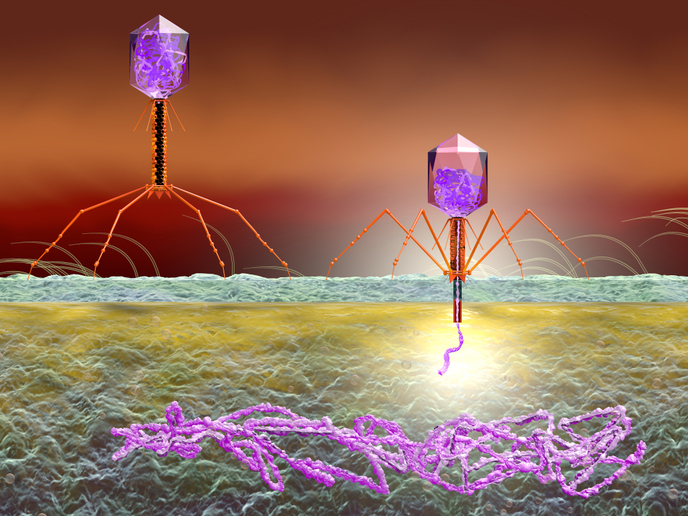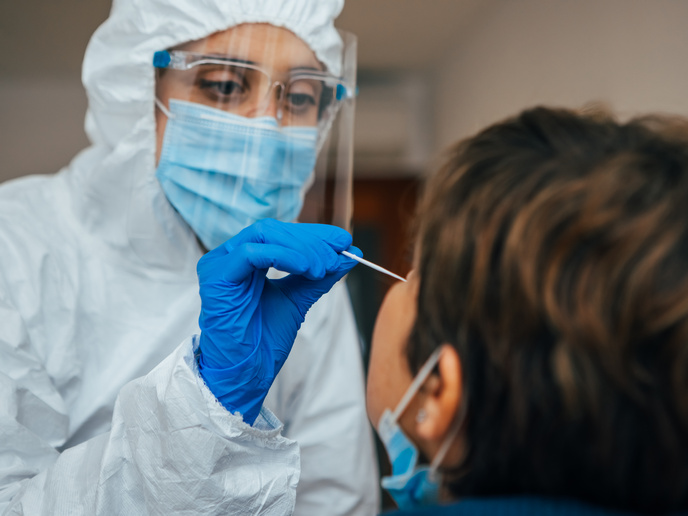Prophages: a new agent for the transfer of antibiotic resistance genes
Bacteriophages(opens in new window) are viruses that infect bacteria and can undergo either a lytic or a lysogenic lifecycle(opens in new window). In the lytic cycle, phages multiply and release new virions, lysing host cells, whereas in the lysogenic cycle, phages incorporate their own genetic material into the bacterial chromosome, forming prophages(opens in new window). This mechanism facilitates the transfer of novel genes into bacteria, including ARGs, helping the adaptation of bacteria to new environmental conditions. However, our understanding of the evolution of ARG-carrying prophages is incomplete.
Evaluating the fitness cost and benefits of prophages to host cells
The ProphARG project aimed to investigate how prophages affect bacterial fitness. Undertaken with the support of the : Marie Skłodowska-Curie Actions programme(opens in new window), experiments were designed to study the evolution of ARG-carrying prophages and their impact on the host bacterium Escherichia coli. “Our goal was to study the effect of prophages on bacterial hosts in terms of antibiotic resistance and infectious diseases in humans and animals,” explains the MSCA research fellow Carolin Charlotte Wendling. To quantify the relative fitness of bacteria, researchers performed pairwise competition assays among bacteria containing a prophage and others without prophage. To be able to draw general conclusions across a wide range of resistance genes and bacteriophage types, they used engineered prophages rather than naturally occurring ones, where a non-essential genomic region of the phage had been substituted with an ARG. Competitions in multiple environments were undertaken to differentiate between the fitness effects of ARG-carrying prophages to those free of ARGs. Results showed that environmental conditions dictated the benefits or fitness cost of prophages to host bacteria. In the absence of antibiotics or other stressful conditions, ARGs and prophages were not costly to their hosts. Under conditions that favour the lytic cycle, such as exposure to UV light or other DNA-damaging agents, the fitness of bacteria with prophages was higher than those without prophages. This was because prophages switched back to the lytic cycle and killed the competing phage-free bacteria. In contrast, in the presence of antibiotics, bacteria with ARG-carrying prophages survived better as they were able to resist antibiotics. “ARGs became advantageous at higher antibiotic concentrations,” emphasises Wendling.
Clinical impact of ProphARG
Multidrug-resistant bacteria pose a significant clinical threat, impeding the effectiveness of existing antibiotics and putting at risk thousands of individuals undertaking routine procedures. Bacteriophages have long been known to have protective effects on the host, confer immunity against superinfecting phages and help them resist antibiotics through beneficial ARGs. Moreover, prophages which constitute up to 20 % of bacterial genomes, contribute to genomic diversity among bacterial isolates. ProphARG findings underscore the contribution of prophages as causative agents of ARG transfer, where up to now, research had mostly focused on plasmids. Sub-inhibitory concentrations of antibiotics seem to favour the horizontal transfer of phage-encoded ARGs and contribute to the spread of antibiotic resistance. Therefore, antibiotic treatment strategies must be tailored to reduce the risk of inducing prophages and the transfer of ARGs to other members of the bacterial population. Understanding the drivers of bacterial fitness can help predict the spread of ARGs from agricultural or natural environments to human microbiota or pathogens. Looking ahead, Wendling aims to “extend ProphARG findings by studying the influence of prophages in the spread of multidrug-resistant plasmids in bacterial communities.”







